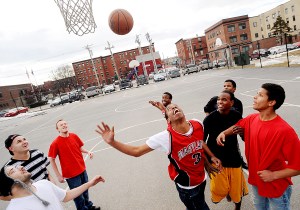LEWISTON — Maine is growing more diverse.
And Lewiston is now, officially, one of its most diverse cities.
U.S. Census numbers released Thursday show an explosion over the past 10 years in black or African-American residents, from 383 in 2000 to 3,174 in 2010, a nearly 730 percent increase. As a percentage of the overall city population, Lewiston’s black or African-American residents jumped from 1 percent to 8.7 percent, the sharpest increase of Maine’s five largest cities.
Experts say that change is largely due to the influx of Somali immigrants, who started arriving in Lewiston in 2001. The 2010 Census is the first official government count to include Somali residents.
“You know times are changing around you, but to see the scope of what has evolved over the last 10 years reach the proportions that it’s reached today … it’s been an almost unimaginable set of circumstances that has brought us here,” said Phil Nadeau, deputy city administrator. “It’s changed the community in ways I don’t think anyone could have imagined.”
Nadeau has estimated that about 4,000 Somalis live in Lewiston. He believes they have been under counted in the 2010 Census, but not by as much as he’d feared they would be.
“That’s in the ballpark,” he said of the Census figures.
There has also been a sharp increase in the number of Lewiston residents of more than one race, from 593 in 2000 to 951 in 2010, a 60 percent jump. Those numbers, coupled with smaller increases in residents who identify as American Indian or Alaskan native, native Hawaiian or other Pacific Islander, Asian or “some other race,” made Lewiston one of the most diverse major cities in Maine, second only to Portland.
In Auburn, the black or African-American population jumped from 137 to 570, more than four times what the figure was in 2000.
Maine’s five largest cities saw increases in their percentage of minority residents and a drop in the percentage of white residents. Portland, the most diverse city, dropped from 91 percent white in 2000 to 85 percent white in 2010. Lewiston dropped from 96 percent white in 2000 to 87 percent white in 2010. Auburn, Bangor and South Portland have white population percentages in the low to mid-90s, down from the mid- to high 90s a decade ago.
In all, Maine’s minority population grew from about 3 percent in 2000 to about 5 percent in 2010. The increase is small, but Thomas Merrill, an economist with the Maine State Planning Office, noted that Maine’s overall population grew only 4.2 percent, while the black or African-American portion of the population jumped by more than 132 percent.
“That means the black or African-American population, despite making up only 1.2 percent of the state’s population, contributed to about 16 percent of the population growth during the decade,” Merrill wrote in an email. “I suspect the future trend will be population growth driven by a more diverse population.”
Lewiston businessman Hussein Ahmed was part of the first wave of Somalis to settle in the Twin Cities. He moved to the area in 2002.
“We had the hope that Lewiston was going to be better for us, that it’s going to be a city that we will feel comfortable, welcome, safe,” he said. “So far, that hope has not faltered. It has been great for us.”
Lewiston’s increased diversity has most noticeably changed the downtown, which once sported bars, social clubs and pawn shops and now offers a number of Somali-run grocery stores and shops. Ahmed owns the Barwaqo Halal Market on the corner of Lisbon and Cedar streets.
“Many of us call Lewiston today their residence,” he said. “We have several businesses. We have established the Islamic center. We have homebuyers in Lewiston-Auburn areas and that number is growing by the day. There seems to be a long-term commitment from the community to stay in the Lewiston area.”
Lewiston schools also have been greatly affected by the change. Of the city’s 3,174 black or African-American residents, 54 percent are children.
Because many Somali students don’t speak English as their native language, they require help from the school system’s English Language Learners program. In 2000, the program had only a couple dozen students and one teacher. This year, nearly 1,000 students are in the program and it’s staffed by 44 people, including 28 teachers, six tutors and a parent liaison. The influx of Somali families meant Lewiston gained students — and, with them, state aid — at a time when other school systems were losing students and state money.
Some Lewiston schools that were nearly 100 percent white a decade ago now have a majority of black students.
Bill Webster started as the Lewiston School Department’s superintendent in January. He said he was drawn to the school system because of its diversity.
“With that, certainly come challenges but also come opportunities,” Webster said. “I think Lewiston has the vitality that, for me, I just didn’t see in many other places in Maine. I find it quite exciting Lewiston is growing.”
Thursday’s numbers will be analyzed by city and state officials, as well as others, and used to create a picture of Lewiston, its current needs and its requirements for the future.
“You’ve got to know who your residents are,” Nadeau said. “If you want to understand your community, if you want to understand the needs of your community, you have to understand who lives in your community and what their needs are”
It’s a bit more challenging now, he said.
“We’re more diverse now so you have to spend a little bit more time thinking about it and researching it because the needs are different for everybody. Having more information about who we are is going to influence a lot of initiatives, a lot of organizations in this community.”
The study of this week’s Census release will take a while. And more Census figures are due later this year.

Comments are no longer available on this story